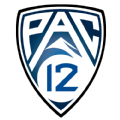As conferences continue to expand, league play in the power conferences is starting earlier and earlier. The days of waiting until the calendar turns to the new year for conference play to begin are long over (for most of the major conferences, at least). By this time next week, teams from the ACC, Big East and Big Ten will have already played some of their fellow members. The Pac-12 begins days after Christmas, while the Big 12 and SEC still wait until after the new year kicks off.
So, even though it feels like the season just began -- it's still only about five weeks old -- and we're dealing with sample sizes, trends are already beginning to form. No. 1 is the relative strength of each of the big leagues, in turn creating narratives about NCAA tournament depth, Quadrant 1 wins and Selection Sunday fate.
Given what we know so far, here are the biggest big-picture questions and concerns facing each of the top six conferences as they begin their slate.

How much does the ACC need Duke to live up to preseason expectations?
The ACC is the only one of the top six leagues without a team ranked inside the top 10 of the NET or KenPom. Duke leads the way in KenPom; for the NET, it's Clemson. But there is no clear powerhouse in the conference -- especially not with the Blue Devils losing guard Tyrese Proctor to injury and heading into a date with Baylor in New York with three losses. Duke was the preseason No. 2 team in the country and was expected to be a national championship contender and the tide to lift the rest of the ACC. There's still plenty of time to turn things around, but there's a case to be made that there's no true title contender in the league.
A disappointing nonconference campaign has weighed on the league for the past few seasons, sinking the metrics to a point that has a tangible impact on Selection Sunday. Could that happen again? Eight ACC teams are ranked in the top 80 of the NET. Clemson is 4-0 against Quadrants 1 and 2. The other seven teams were a combined 7-14 entering Wednesday.

Where's the middle of the Big East?
This conference should have one of the best championship races in the country, with three legitimate national title contenders in UConn, Marquette and Creighton (as long as the Bluejays don't have to face any Mountain West opponents). Outside of the big three, however, the league has serious questions. Villanova was expected to be a top-20 team nationally, but the Wildcats are incapable of beating teams from the city of Philadelphia. Xavier looked promising in the offseason, but injuries have led to a 5-5 start that includes two buy-game losses. The Rick Pitino era at St. John's is off to a rocky start. Providence and Butler are providing some early optimism, but 14 of their combined 16 wins entering Wednesday were against Quad 3 and 4 teams.
The current situation should bode well for the Big East potentially getting two 1-seeds, possibly three teams on the top two lines come Selection Sunday. But early struggles and a lack of heft on nonconference profiles could lead to a lack of depth toward the end of the season.

Who among the Big Ten will make up for Michigan State's struggles?
Entering the season, the Big Ten had two teams ranked in the top four nationally. Purdue and Michigan State were expected to produce an epic battle for the conference championship and then try to end the Big Ten's national title drought. That hasn't quite transpired. MSU has been the most disappointing team in the country, dropping to 4-5 after last weekend's loss at Nebraska. It's tied for the worst start by a preseason top five team over the past 40 years. Purdue, however, has held up its end of the bargain and very much looks the part of a potential Final Four team.
But, is there anyone ready to fill the void vacated by Michigan State? Illinois and Wisconsin have some great wins on their résumés -- Florida Atlantic, Marquette, Virginia -- but that's about it for this league. This is a conference that has landed at least eight bids in each of the past four NCAA tournaments, but a lack of quality wins could end up being an issue this season, especially if Purdue runs away with the league. It's worth noting, however, the Big Ten only had two teams seeded better than 7 in last season's NCAA tournament -- and still received eight bids.

Is the Big 12 too tough?
Life is good in the Big 12. It's the best league in the country yet again, with national championship contenders and plenty of depth to produce a slew of NCAA tournament bids. But if there is one potential concern for three months from now, it's the top teams beating up on each other and hindering their opportunities for a 1-seed. Three teams are among the top six of the AP poll (Kansas, Houston, Baylor). Houston is ranked No. 1 in the NET, BPI and KenPom; Houston, Baylor and Oklahoma are still undefeated; and 11 teams have legitimate NCAA tournament hopes.
Then again, Kansas entered Selection Sunday last year with seven losses and the conference championship, despite losing five Big 12 games -- and still received a 1-seed. The Jayhawks had 17 Quad 1 wins, more than anyone else in the country. Second to them was Texas, with 16. Of the eight teams with double-digit Quad 1 wins last season, five came from the Big 12. We might be headed toward a similar situation this season. Like I said, life is good in the Big 12.

So the Pac-12 is Arizona and ...?
Arizona and UCLA are the biggest brands in the Pac-12 (for now), and they've carried the league for the past few years. They were the lone top-four seeds from the league in 2022, and both landed 2-seeds in the 2023 NCAA tournament. This season, though, the Wildcats look to be without a partner in the conference title race. They're the only Pac-12 team ranked in the top 20 of the NET and KenPom and the only Pac-12 team in the top 30 of the BPI. There's a reason the latest Bracketology from Joe Lunardi featured just four Pac-12 teams, the fewest of any power conference.
The usual suspects, UCLA and USC, either don't have any remotely good wins or have been far too inconsistent. The hope would be that those two programs turn things around and then that a couple of other schools use recent big wins -- Colorado over Miami, Utah over BYU, Washington over Gonzaga -- as springboards.

Will the SEC's sheer number of nonconference losses be felt on Selection Sunday?
Despite having seven different teams receive votes for the AP Top 25 this week, the SEC has taken its lumps in nonconference contests. Tennessee and Kentucky are the two highest-ranked teams in the league, but the Vols already have three losses while Kentucky has a home loss to UNC Wilmington and zero top-50 KenPom wins. Let's run down the line: Auburn has a loss to Appalachian State, Alabama and Texas A&M each already have three losses, Arkansas is just 6-4, Mississippi State has losses to Southern and Georgia Tech, Florida has three losses, and its best win is over Pittsburgh. Ole Miss and South Carolina have been pleasant surprises, but both are still relatively unproven.
Unlike the ACC feeling the impact of a middling nonconference performance when Selection Sunday rolls around, the SEC's combination of competitive top-half teams and number of nonconference losses might be felt more when it comes to earning high seeds in the NCAA tournament. The league could end up in a situation where none of its teams are on the top-two lines, but five or six teams are still seeded among the top half of the bracket.
BONUS: What does the power conferences' uncertainty mean for mid-majors?
If there was a common theme from the conference-by-conference breakdowns, it's a lack of depth. In theory, this should open the door for more potential at-large bids from the mid-major leagues, and there do seem to be more viable candidates at this point of the regular season than in the past. The American and Mountain West should once again get multiple bids, while the likes of Princeton, James Madison, Grand Canyon, Saint Joseph's and Dayton have all done enough to at least monitor their at-large chances moving forward.
